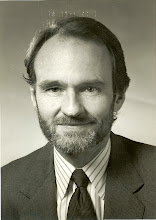In the last sketch (July/7) we highlighted the Fed’s apparent lack of concern for a weak US currency and the consequences, using the price of oil as an example.
Since then there has been a change in Fed rhetoric designed to indicate a growing willingness to support the $. First, Bernanke assured lawmakers that inflation is a concern for the central bank. Then Gary Stern, the long-time president of the Minneapolis Fed and a voting member of the FOMC said that, "We’re pretty well positioned for the downside risks we might encounter from here. I worry a bit more about the prospects for inflation. Headline inflation is clearly too high."
These two statements were enough to birth a change in view among Fed watchers and currency, bond and commodity traders. We had advised in the last post that either a rate lift or jawboning to that effect was necessary to firm the $. That was the result, the $ improving against most other currencies, especially the Euro. That is also one key reason that crude prices have dropped considerably, past few days.
Robert Craven
Since then there has been a change in Fed rhetoric designed to indicate a growing willingness to support the $. First, Bernanke assured lawmakers that inflation is a concern for the central bank. Then Gary Stern, the long-time president of the Minneapolis Fed and a voting member of the FOMC said that, "We’re pretty well positioned for the downside risks we might encounter from here. I worry a bit more about the prospects for inflation. Headline inflation is clearly too high."
These two statements were enough to birth a change in view among Fed watchers and currency, bond and commodity traders. We had advised in the last post that either a rate lift or jawboning to that effect was necessary to firm the $. That was the result, the $ improving against most other currencies, especially the Euro. That is also one key reason that crude prices have dropped considerably, past few days.
Robert Craven
